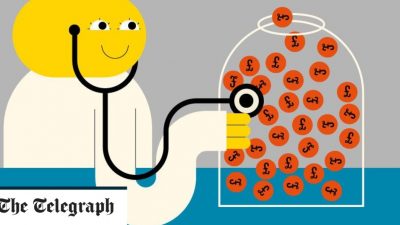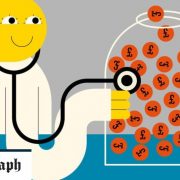Savers were hit by 50 rate decreases in the month before the Bank of England raised interest rates from 0.5pc to 0.75pc, their highest level since 2009, on Aug 2.
Although the decision was widely expected, 16 banks and building societies actually decreased savings rates in July and early August, Telegraph Money can disclose.
Barclays, the biggest bank to do so, cut rates on seven accounts by 0.2 percentage points on Aug 1 – just one day before the rate increase.
An increase in Bank Rate is usually reflected quickly in variable-rate mortgages – HSBC, Barclays and Virgin Money have already increased rates for borrowers in line with the central bank’s decision – but savers are rarely given the same treatment. Most of the banks that have announced an increase in savings interest since Aug 2 have offered savers only 0.1 percentage points more.
Barclays said the decreases in early August were on fixed-rate accounts so would not immediately affect existing savers. It claimed its rates remained competitive. The cuts took the rate on its one-year bond from 0.9pc to 0.7pc, on its two-year flexible cash Isa from 1.25pc to 1.05pc and on its three-year flexible bond from 1.6pc to 1.4pc.
Yorkshire Building Society cut rates on 11 accounts and Sainsbury’s Bank on nine. Others to lower rates included Skipton Building Society, Vanquis Bank, Chelsea Building Society and Bank of Cyprus UK.
Anna Bowes of Savings Champion, a savings management service, said: “It’s quite suspicious to see rates being cut when there was such a strong likelihood Bank Rate was going to be increased.
"Bank Rate is there for both borrowers and savers. But the rates of interest on savings accounts are so severed from base rate – it’s absolutely outrageous that banks and building societies have so little regard for it.”
Data from Savings Champion shows that savings rates have not recovered to previous levels following past increases in Bank Rate.
In the two months before Bank Rate was cut from 0.5pc to 0.25pc in August 2016, the average rate on an easy-access account was 0.5pc. This quickly fell to 0.35pc but, despite two increases in Bank Rate since November, has risen only to 0.41pc in recent months.
Simon Hills of UK Finance, the banking trade body, said maintaining the right level of saving deposits was a balancing act and that interest rate changes offered a way to achieve it.
“There are a number of other ways that banks can find funding, from taking deposits from companies or raising funds in the international capital markets,” he said.
“If banks don’t need retail deposits they won’t price up for them.
“It’s still quite a competitive market. We have a lot of ‘challenger’ banks increasing competition and offering very good rates to savers.”
A series of government funding schemes has provided cheap money to banks for the past five years, although they came to an end last year, and this has also reduced the incentive for banks to offer decent savings rates.
Andrew Gall, of the Building Societies Association, said mutuals had generally paid better rates than banks.
He said: “Providers must regularly review both mortgage and savings rates and adjust them to changing circumstances. This isn’t just because of changes in the Bank Rate. For example, if other providers change their savings rates, the rest may need to respond to ensure they do not attract too little or too much new money.
“Even when these factors don’t change, any bank or building society that has received a high volume of savings into a high-paying account and significant outflows from a lower-paying account may need to adjust some interest rates across its range to ensure its commercial position remains viable overall.”
























Comments